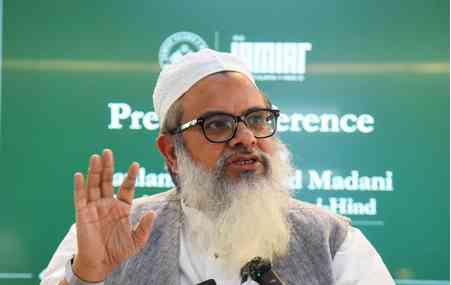Fintech Leaders on the year gone by and Outlook for 2022

Gaurav Chopra, Founder & CEO, IndiaLends; Founding member of Digital Lending Association of India (LendingTech)
1. Regulator is now actively monitoring digital lending industry
Last month, RBI’s working group on digital lending released a set of recommendations and suggestions that lays down principles for regulation of the digital financial services sector. The digital lending report provides a balanced framework encouraging innovation, protecting consumers and minimising risks to the financial system. A framework of this nature is critical for the industry to grow and thrive at scale.
2. Large size corporates getting into lending
Last year RBI decided to permit banks to co-lend with all registered NBFCs (including HFCs) based on a prior agreement. This has led to many interesting tie-ups. Today all the major corporates in the country are in the business of lending and the same will continue in 2022.
3. Need for framework around data storage
In the coming year, we can expect regulatory to lay down a framework for data storage. We strongly believe in user privacy and the user’s right to information with regard to how and what data is collected, stored and applied for improvement of services to the user. Additionally, when does the user data become obsolete and how is it discarded. Any framework that is able to create more transparency for the user with respect their data whilst enabling digital lenders to make more informed decisions with regards to expanding credit availability to the underserved will have our vote of confidence and strict adherence.
4. Focus should be on the product more than cashbacks and loyalty
Consumers today are quite evolved and comfortable using technology. Companies who offered heavy cashbacks couldn’t reap its benefits (customers’ loyalty). The focus for any fintech needs to be on the product.
5. Technology adoption will make process easier, catalyst for growth
Digitisation, mobile first experiences and vernacular content would be at the centre of increased customer adoption, thus leading to better underwriting models, and a self-propelling flywheel of credit penetration. Smartphone penetration and improved internet speeds are the starting point of this journey, and customers today are becoming more comfortable with an internet first approach to problem solving.
Dilip Modi, Founder, Spice Money (Rural Fintech)
2021 has been a memorable year for digital and financial adoption as well as inclusion, particularly in India’s hinterlands as they continued to take centre stage in the socio-economic development of the country. We saw the government and the RBI making strides towards inclusion by addressing rural-specific needs through developments such as deployment of 57 lakh payment acceptance devices under PIDF, plans to launch UPI on feature phones, and Jan Dhan 3.0’s focus on doorstep banking.
While India continues with the digitisation drive, it is important to understand that rural India is still a cash-driven economy where, as a recent study by CMS Infosystem found, even when one is comfortable with online shopping, they prefer the ‘cash on delivery’ option. Hence, in the coming year, there will be more innovations in the ‘phygital model’ that suits the rural lifestyle. While there are a few fintech players who are focussing on the rural economy, having more rural focused fintech players will create a significant impact in bridging the existing gap by offering innovative and customised solutions specific to the needs & requirements of rural customers.
Throughout the pandemic years of 2020 and 2021, merchants have been helping rural communities with their basic banking needs, especially in places lacking traditional ATMs. They have been utilising micro-ATMs and AePS to empower rural India with easy access to their own hard-earned money. We expect more entrepreneurial rural youth to become nanopreneurs with the help of rural fintechs and play their role in furthering financial inclusion.
In 2022, we expect an increasing number of youngsters in rural India wanting to be financially independent and take the entrepreneurial route to become merchants. They will further promote assisted financial and digital inclusion that supports those with minimal financial and digital literacy with seamless access to banking services. Along with this, we also expect to see the creation of a large number of nanopreneurs that will help in building trust by busting the myths and misperceptions attached to digital offerings amongst rural citizens. From a business perspective, 2022 will witness more fintechs tap into the business opportunity in rural India. More companies will realise the benefit of creating a tech-driven ecosystem and come together as partners to address the needs of the untapped customer in India’s tier 2 towns.”
Lalit Mehta, Co-founder & CEO, Decimal Technologies (BankingTech)
As the pandemic continued into 2021 with the deadly second wave hitting in April, India witnessed a further rise in technology adoption in financial services. One segment that has been changed forever is lending. Many customers have realised the inefficiencies that plague traditional lending such as the need to complete physical paperwork, undergo cumbersome KYC and deal with in-person interactions. In the past year, digital lending has come to the fore and portrayed its ability to eliminate these common problems thus, making the complicated process seamless.
Digital lending especially emerged as a boon for MSMEs that have traditionally struggled with credit accessibility due to the lack of proper financial documentation or collateral for the underwriting process. Fintechs enabled the use of alternative data for underwriting in digital lending, turning MSMEs credit-worthy. In the next year, we expect an increasing number of MSMEs to be financed to scale. Additionally, since the integration of technology means that credit can be delivered to the underserved areas of the country, it will lead to an increase in the contribution of MSMEs towards the national development where MSMEs already play a huge part.
Equitable growth and financial inclusion are critical for India’s recovery in 2022 and fintechs can support it by expanding the reach of digital lending to the farthest corners of India. As we step into the new year, digitising offline channels by onboarding Direct Sales Agents (DSAs) and Banking Correspondents to offer credit services to their communities will play a pivotal role in reaching small rural businesses and helping them secure credit. Digital lending also has the potential to innovate outside the constraints of traditional credit offerings and offer customized products that suit the reality of MSMEs and the semi-urban and rural population. We expect the new year to see significant traction in this direction.
We are also looking forward to new regulations around digital lending along the lines of the recommendations submitted by the working group chaired by Jayant Kumar Dash,that will ensure that the space is safe for customers and only legitimate players are able to fulfil the credit needs of India, building trust in the fintech players.”
Abhishek Poddar, Co-founder and CEO, Plum (InsurTech)
The year 2021 was a successful year for the insurtech industry as it witnessed a funding growth from a modest base of $11 million in 2016 to $287 million in 2020.
Driven by innovation in 2021, we are seeing more Insurtechs are now focusing towards making the entire process of issuing an insurance policy and its claim, swift and easy for end users. The industry is all set and increasingly shifting online and becoming mobile-first. Online insurance policy aggregators also played an important role and actioned their offerings to fill in the demand gaps.
The growth of health insurance was prominent as the pandemic made everyone more conscious towards their health and wellbeing, which led individuals and businesses to realise the value of a comprehensive health benefits plan. As more companies and employees became aware of the benefits of health insurance; they took up various types of covers for COVID19, hospitalisations, home treatment and comorbidities among others. Group health insurance came to prominence and yet again, with the new variant we are seeing an upsurge in the health insurance demand from businesses.
2021 was a successful year for Plum and we have seen good traction in business especially after the second wave. Plum’s growth has been driven by first time buyers of health insurance, with 80% of companies on its platform buying health insurance and health benefits for the first time. 70% of customers came via word-of-mouth recommendations, highlighting the quality of experience the company has delivered to its members.
We onboarded 1000+ customers comprising modern startups and SMEs in FY 2021. Plum witnessed a growth rate of over 110% quarter-on-quarter. With innovation at its core, Plum also launched a new self-serve product for early stage startups, SMEs and gig/ freelance workers called Plum Lite. For early stage businesses, thinking of health benefits from day one is a challenge due to accessibility, affordability and usability. Plum Lite offers instant activation for teams as small as two; for a monthly subscription as low as Rs 85/ month.
Outlook for 2022
Some trends we anticipate in the space include:
• Insurers diversifying product offerings. More policies will be co-created and personalized for specific needs. Example: inclusion of IVF or critical illness covers in Group Health Insurance.
• The ongoing digital transformation will continue. Throughout 2022, the proliferation of digitized insurance services, including automation and AI, will spread wider throughout the industry as more brokers gain confidence with this new technology.
• The insurtech industry will also adopt a more data driven approach to create personalized plans and also deepen access and usability in underinsured segments.
• This space will also see more funding with possible M&As in the subsequent two years
Prabhtej Singh Bhatia, Co-founder and Co-CEO, Falcon (PayTech, Banking, RegTech)
Over 70 fintech deals, drawing $2.25bn in the third quarter, clearly shows signs of maturity after a decade of evolution. The Government of India has played a crucial role here in providing an enabling environment through tax holidays, dedicated startup fund and licenses. Banks and larger financial institutions, driven by digital strategies, have looked at several techniques to expedite their transformation. There was faster adoption of white label fintech solutions to reduce cost as well as increased M&A and ecosystem partnerships to expand bundled offerings to customers. The year saw a marked interest of regulators in issuing licenses to fintechs to digitise financial offerings and also protect customers. Machine learning and Robotic Process Automation are two technologies that have become common place in banking and fintech infrastructure this year.
In 2022, we expect the Government to push improvements in internet infrastructure to enable more people to adopt smartphones and the internet to meet their financial needs and reduce customer friction in digital payments. We also see a rise of embedded finance across BFSI, B2C and B2B e-marketplaces, telecom and large corporates as more companies move towards integrating financial services within their ecosystem to retain customers. Another trend that we sense is that traditional players will continue to expedite their digital transformation through no code and custom API/SDKs based solutions to focus on post pandemic recovery.”
Gurjodhpal Singh, CEO, Tide India (UK-Headquartered Digital Bank)
This year had the regulator dish out some monumental policies to foster digital inclusion, one of them being the decision to allow NBFCs to apply for Aadhaar-e-KYC authentication license that would ensure fast delivery of financial products. Moreover RBI's recent proposal to launch UPI-based payment products for feature phone users and to review digital payment charges will help amplify the reach and adoption of financial products among a larger section of people. While Niti Aayog's proposal to launch full-stack digital banks will enable us (fintechs) to take financial services to a larger set of the population in a secure and compliant manner.
As an outlook for 2022, embedded finance will see exponential growth as it holds immense potential to solve working capital issues among small businesses. Moreover, the regulator's prompt and thoughtful steps on digital/video KYC will also see new dimensions in the new year. The regulator is also working towards strengthening the PPI license regime. Lastly, GIFT City's flagship event ‘Infinity Forum’ represented the immense possibilities that Fintech has in India and 2022 will see initiatives by the governments of the UK and India strengthen the trade corridor. This will open several possibilities for businesses in both the countries and Tide with its cross-border platform has the potential to serve SMEs on both sides.
Ankit Ratan, Co-founder and CEO, Signzy (RegTech)
One of the most noteworthy development has been the implementation of CKYC norms as mandated by the RBI in 2021, which allows banks to centrally store and access digital files of the same customer. CKYC compliance reduces the burden of multiple KYC process for the same customer and thus expedites their journey to avail different financial solutions. Moreover, the RBI and SEBI have been stricter with the adherence to rules, and with banks being penalised for shortcomings in compliance, there is an increase in demand for RegTech solutions to improve the overall KYC and compliance mandate in BFSI.
In 2022, we do see more developments emerging around protecting user data and privacy and improving cybersecurity measures. The collection, storage, and sharing of this data is going to be a primary focus of regulators. Therefore banks, fintechs and financial institutions will be more aggressive in integrating technology to meet these requirements. As India continues to push for a digital economy, digital banking and digital first banking will become commonplace, requiring deeper collaboration between traditional players, fintechs and bankingtech companies to enhance cybersecurity measures.
Stuart Jackson, Chief Operating Officer, Global PayEX (Fintech SAAS)
The year 2021 has been a receding year in the global pandemic, where we have seen businesses adapt to the situation and dynamically pivot towards digital transformation. Key governing bodies like the RBI and associated entities like NPCI have helped the fintech industry by implementing several initiatives in 2021 that had a positive effect. For instance, the availability of NACH on all days of the year, positive pay confirmation required for large value cheque payments, further driving e-Invoicing adoption, driving open API banking and launch of account aggregator platform.
While 2021 has been a year of transition, we will certainly see an accelerated adoption of cashless / digital payments and processes in the upcoming year. With the growing need of finance for the MSMEs, we will see an increased adoption of digital finance initiatives by large and mid-sized Indian companies. The key focus areas would be core Accounts Receivables (AR) and Payables (AP) process automation, digitization in payments through Electronic Invoice Presentment and Payment (EIPP) in AR and vendor portals in AP, and automated reconciliation.


 cityairnews
cityairnews 









